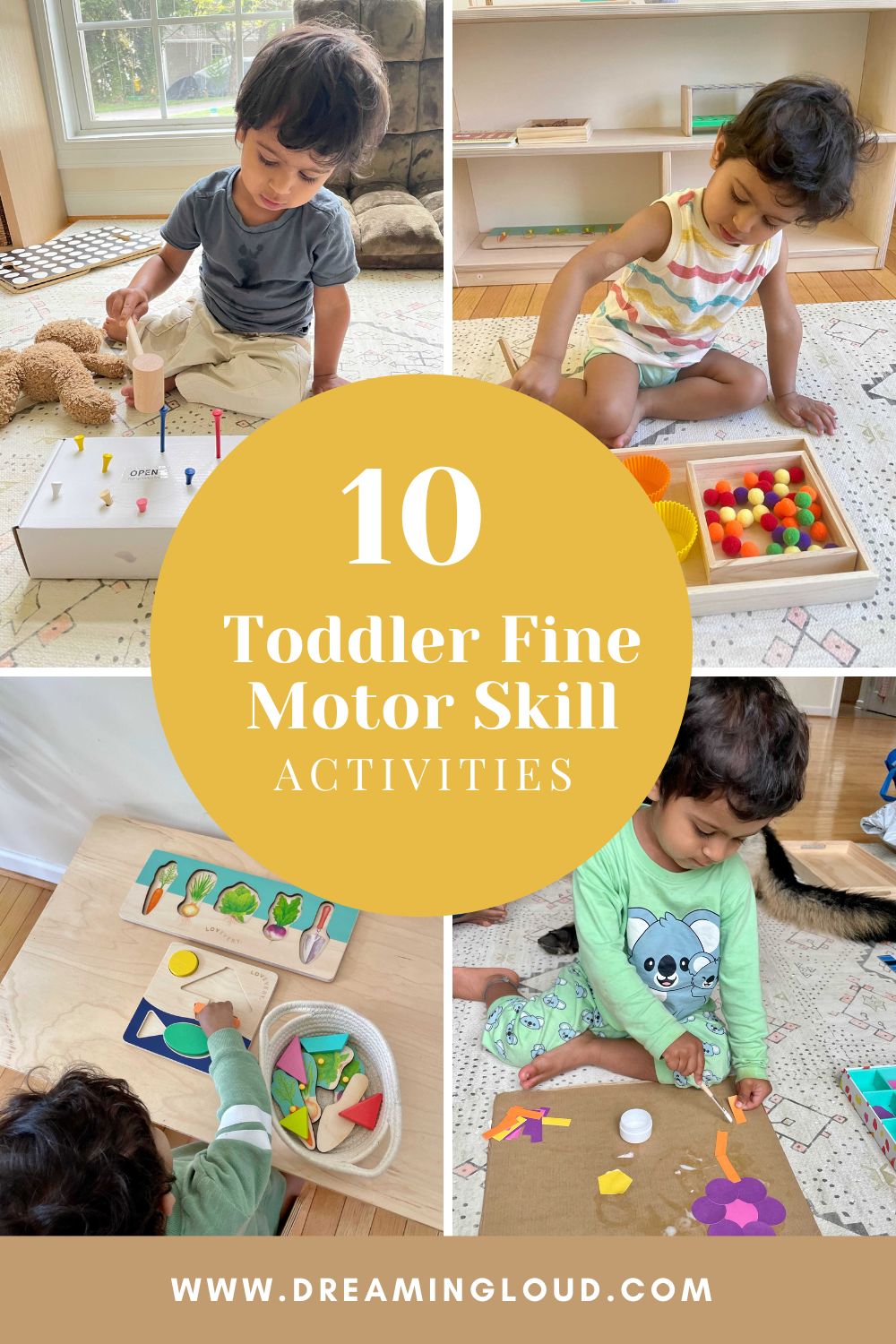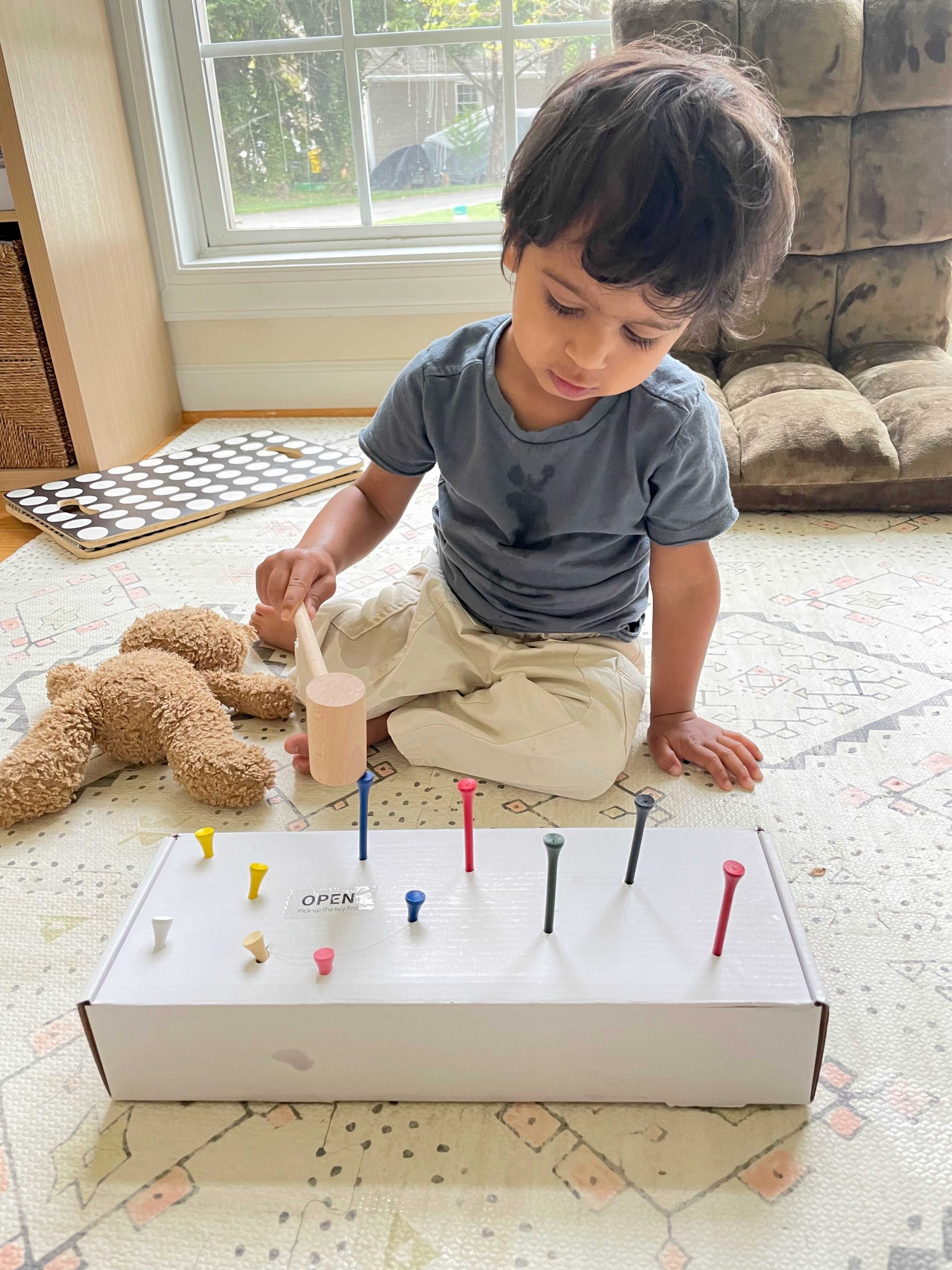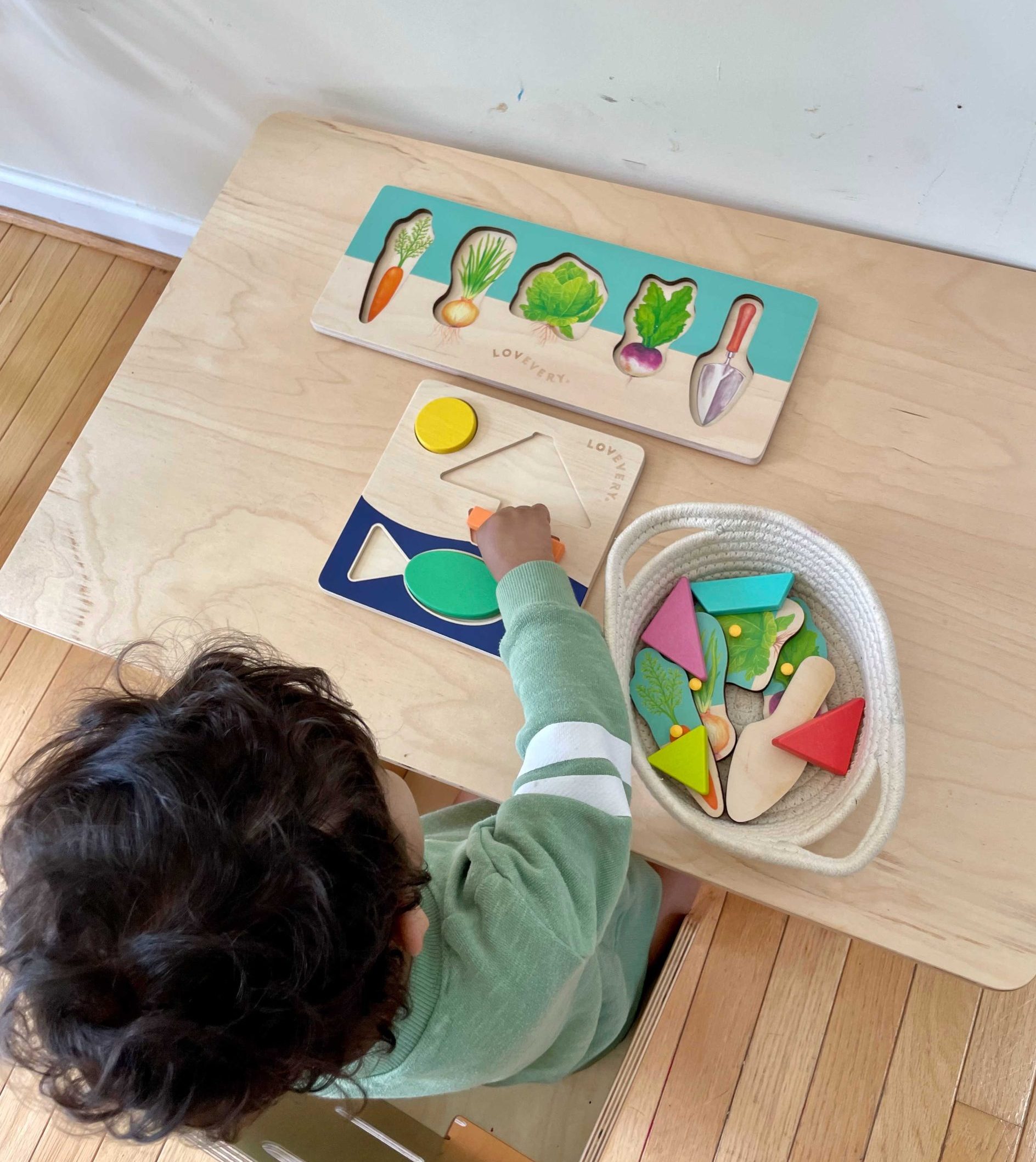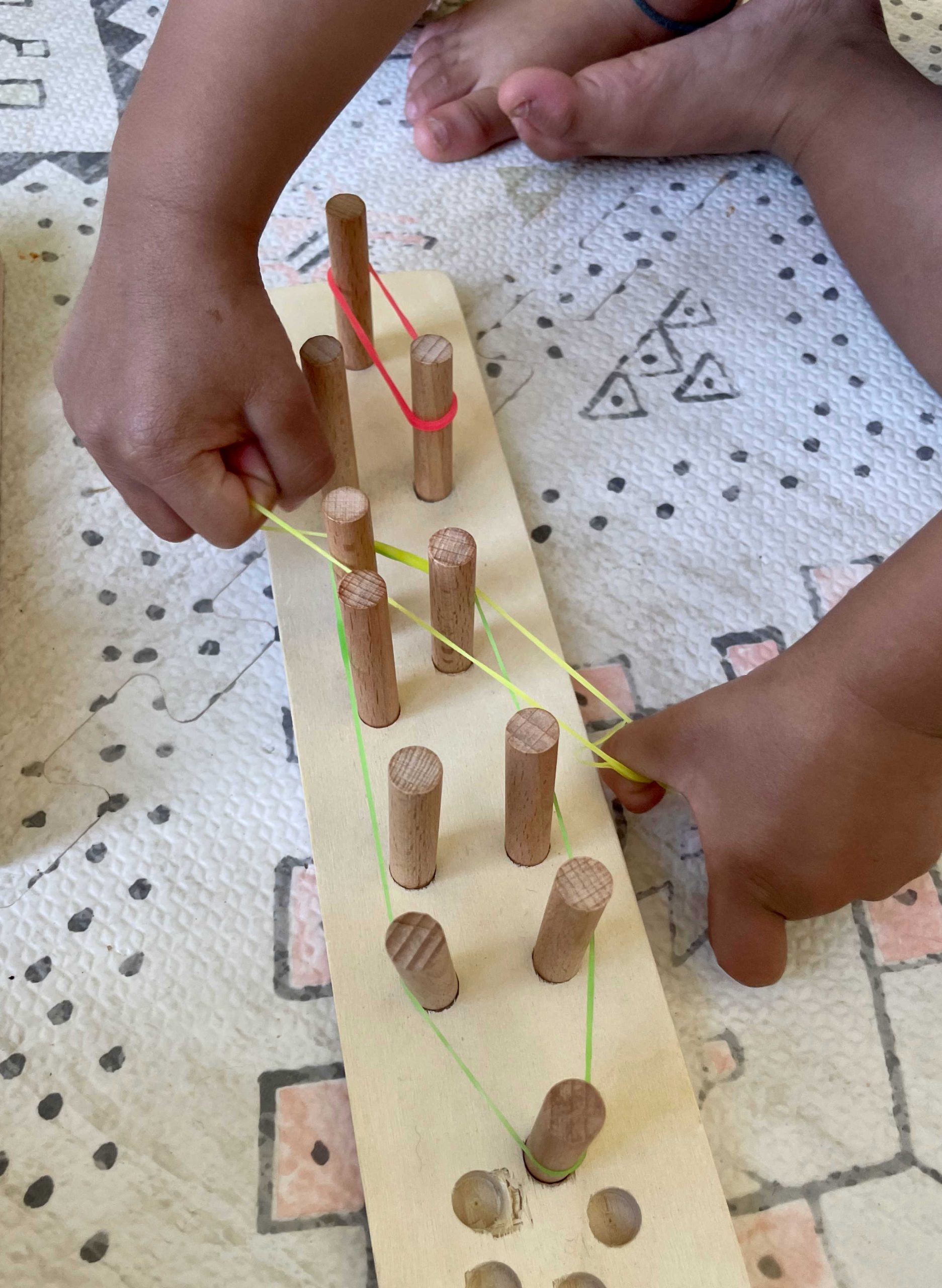In this article, we will explore 10 Engaging Fine Motor Skill Activities for 2-Year-Old Toddlers. These activities are not only fun and engaging but also help toddlers improve their hand-eye coordination, finger dexterity, and muscle control.
Fine motor skills refer to the small muscle movements of the hands and fingers.These activities are not only fun and engaging but also help toddlers improve their hand-eye coordination, finger dexterity, and muscle control which enable them to do many things in their daily lives, like eating, writing, manipulating objects, and getting dressed
Here are some reasons why fine motor skills are important for toddlers-
-
Hand-Eye Coordination: Hand-eye coordination is the ability to perform movements with the hands while guided by the eyes. A child’s hands and sight work together to perform fine motor skill activities.
- Preparing for Writing: Developing fine motor skills at an early age sets the foundation for later writing abilities. The control and precision required for holding a pencil and forming letters are developed through activities that strengthen the muscles in the hands and fingers.
- Independence in Daily Tasks: Fine motor skills enable children to become more independent in self-care activities. They need these skills to dress themselves, feed themselves with utensils, brush their teeth, wear shoes etc.
- Cognitive Development: As children engage in activities that require fine motor control, they also exercise their problem-solving, critical thinking, and spatial awareness skills.
-
Language Development: Fine motor activities often involve the exploration and manipulation of objects, which provide opportunities for language development. Children can describe the objects they use, follow instructions, and engage in conversations while participating in fine motor activities.
Safety Measures to Consider When Engaging in Fine Motor Skill Activities
- Adult supervision – Always have an adult supervise while doing these activities.
- Child-safe tools– Select materials that are safe and suitable for the age of the child. Avoid small objects that could be choking hazards for young children.
You might also like these related posts:
- Best Puzzles for 2-year old
- Easy Pattern Matching Activity (free printable)
- Toddler Summer Essentials
- Eco-friendly Toy Storage Ideas
- 10 Fun Water Toys for Toddlers
View this post on Instagram
10 Engaging Fine Motor Skill Activities for 2-Year-Old Toddlers
1. Lacing Beads Fine Motor Skill Activity
Lacing beads is an excellent activity for hand-eye coordination. It involves threading beads onto a string or lace. Always ensure the beads are large enough to avoid choking hazards and supervise the child during the activity.
Lacing beads are from Lovevery play kit, Shop similar Lacing beads here
2. Color Sorting with Pom Poms and Tweezer Fine Motor Skill Activity
Using tweezers to pick up small objects like pom poms and sorting them by color helps develop hand-eye coordination and encourages children to discriminate and recognize different colors visually.
Materials needed:
- Pom poms in various colors
- Silicone cups or muffin cups in corresponding colors
- Tweezers or child-friendly tongs
- Tray
Instructions:
-
Set up pom poms in different colors and matching cups in a tray
- Demonstrate the activity to the child. Show them how to use the tweezers or tongs to pick up a pom pom and carefully transfer it to the corresponding colored silicone cup.
- Let your little one use tweezers to pick up the pom poms and place them in the correct color cup. They can practice their fine motor skills and hand-eye coordination as they do so.
3. Pounding Golf Tees Fine Motor Skill Activity
Materials needed:
- I put the styrofoam in the cardboard box from old packing material. You can also use Foam noodles from dollar tree or cork board.
- Colorful golf tees
- Kid’s hammer or mallet
Instructions:
- Place the golf tees on the foam or corkboard. You can arrange them randomly or create specific patterns for the child to follow, like an alphabet shape.
-
Show them how to hold the hammer or mallet correctly and demonstrate the pounding motion.
- Encourage the child to use the hammer to pound the golf tees into the board. Whether the child uses the mallets or just their fingers, they build their finger muscles and practice their pincer grasp.
4. Water Transfer with Twisty Dropper Fine Motor Skill Activity
Materials needed:
- Multiple small containers and one big container
- Water
- Food Color
- Twisty dropper or pipette
Instructions:
- Fill the big container with water. Add a few drops of food coloring to make the water more visually engaging.
- Demonstrate how to use the twisty dropper. I say “squeeze” showing the squeezing action to draw water into the dropper and then I say “release” while releasing the squeeze to transfer the water.
- Encourage your little one to use the dropper and do the squeeze and release actions.
5. Alphabet Tracing with Dot Stickers Fine Motor Skill Activity
Alphabet tracing with dot stickers is a wonderful fine motor activity that helps children practice letter formation and improve their hand-eye coordination.
Materials needed:
- Paper
- Dot stickers
- Marker or pen
Instructions:
- On a piece of paper, draw the alphabet or print it. If you are adding more alphabets, make sure you leave enough space between each letter for the dot stickers to be placed.
- Place a dot sticker at the beginning of the alphabet. Demonstrate the activity to the child by picking up a dot sticker, placing it right after the first dot sticker, and following along the lines of the letter.
- Encourage the child to trace the letters using dot stickers.
You can also do a Name Tracing with the dot stickers- Write the child’s name on the paper, leaving enough space between each letter. Place dot stickers along the outline of each letter of their name, and let the child trace it using dot stickers.
6. Puzzles Fine Motor Skill Activity
Puzzles are fantastic for developing fine motor skills in children. Basic jigsaw puzzles or peg puzzles are ideal for younger children. Manipulating the puzzle pieces, grasping them, and fitting them into place helps improve hand-eye coordination and finger dexterity.
I introduce two peg puzzles at once to make it slightly challenging.
You can find the best puzzles for Toddler in this post
Best DIY Pattern Matching puzzle in this post
7. Rubber band Fine Motor Skill Activity
Materials needed:
- Pool or foam noodle or a puzzle base, I used this one
- Assorted rubber bands
Instructions:
- Set up the puzzle or pool noodle in a stable position, ensuring it won’t tip over during the activity.
- Demonstrate how to stretch a rubber band over one of the bars. I say “hold” and “stretch” to hold one end of the rubber band with one hand while using the other hand to stretch and hook the opposite end onto the bar.
8. Working in the Kitchen
Working in the kitchen provides a wealth of opportunities for fine motor skill development. Here are some kitchen-based fine motor skill activities for Toddlers:
- Scooping and Pouring
- Cutting and chopping
- Mixing and stirring
- Rolling dough
- Squeezing and Juicing
- Cracking egg
- Whisking and Beating
- Sprinkling and Decorating
- Washing and cleaning
9. Cutting Tape with Scissors Fine Motor Skill Activity
Materials needed:
- Masking Tape (recommend using colorful masking tape, we didn’t have any so used transparent packing tape)
- Child-safe scissors
- Tray
Instructions:
- Use masking tape and create straight lines. Be sure to press down the tape firmly to secure it to the tray. You can also create checks.
- Show the child how to hold the scissors correctly and demonstrate the cutting motion.
- Encourage your little one to cut the tape using the scissors carefully. In the beginning, they will only to able to make one cut per section; encourage them to move the scissor forward and cut until the tape is separated into two halves.
10. Gluing and Pasting Fine Motor Skill Activity
Materials needed:
- Precut shapes
- Glue stick or liquid glue with a brush
- Construction paper or Cardstock or cardboard (I cut the Amazon boxes and use them)
Instructions:
- Show a picture of the thing you are making or tell them today we are making a flower.
- Draw the image of the thing on the cardboard.
- Demonstrate the activity: Show the child how to apply glue to the back of an item or on the cardboard with a brush and then stick the shape on it. Explain the importance of using just the right amount of glue (not too much, not too little).
- Encourage the child to glue and stick the shapes.
- If the child is ready for more advanced fine motor practice, encourage them to cut out shapes or images from magazines using the kid-safe scissors before gluing them onto the cardstock or cardboard.
The craft set is from Lovevery play kit, you can shop similar in the slider below




















0 Comments